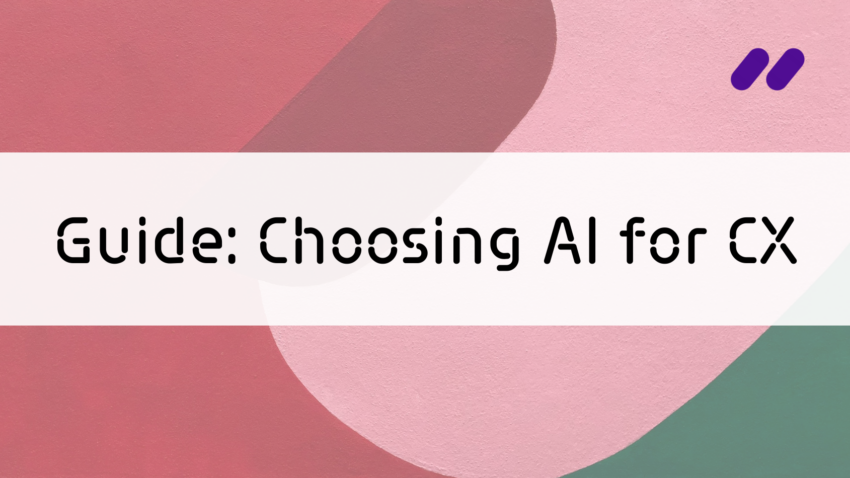When Amanda Robinson started her Master of Library and Information Studies degree over a decade ago, she pictured dusty books not data. To her surprise, the field was rapidly expanding to encompass the wider world’s growing digital directions, from a massive increase in channels for information to tracking customer experience in the digital realm with customer data analysis—and the heaps of information that came with them.
In Montreal’s start-up community, Robinson found a cache of real-world applications for her skills and knowledge. Over the past 10 years, she became an experienced customer data analysis and text analytics pro, working at text analytics companies to analyze vast quantities of previously untapped data and integrate text analytics technologies into some of their biggest client projects. Currently Keatext’s head information scientist, Robinson guides clients in every industry on how to apply AI-powered text analytics tools within their own organizations, whether their goals are to quickly solve customers’ problems, improve products and services, increase employee satisfaction or support more effective business growth strategies.
Q: Why focus your career in information sciences on text analytics?
Text analytics especially is a great fit for me because it’s all about organization, about gathering the data, breaking it up, and putting it back together in so many different ways.
AR: It’s funny because who falls in love with metadata? It turns out, me. In my graduate work, I gravitated to tech-oriented courses, relational database design and metadata. To me, it felt like an incredible puzzle I could put together; and even though I didn’t have a handle on the technology at the time, I loved the concepts behind it. It’s work that is great for people who like organization and list-making. Text analytics especially is a great fit for me because it’s all about organization, about gathering the data, breaking it up, and putting it back together in so many different ways.
From my perspective, I see AI-powered text analytics as a tool that isn’t industry specific. It can be applied to everything from retail marketing and sales to cosmetics industry R&D to employee satisfaction in a major transportation company. It’s all data that we can break up and look at in different ways.
Q: You entered Montreal’s tech start-up community soon after graduating. What was it that appealed to you about working in start-ups?
AR: I saw how vibrant and innovative the start-up community was and continues to be, and that I could apply my specialization in text analytics at these companies without having to be a developer or know multiple programming languages. As an information scientist in start-ups, I function more like a free electron, zooming around different teams, from sales to dev, and helping them meet their own targets as well as the company’s goals.
To the dev team at Keatext, I’m their “superuser” because I’ve used text analysis tools for years. I work with the dev team to determine new features we should add —we’re answering the question, what would someone need to see to get the most out of the tool? In client onboarding, I’m the first person a client has significant contact with outside the sales team, when clients start to use the tools themselves. I take a look at their data and show them how the tool is best suited to their particular needs—it’s tailored, results-oriented training. I’ve worked for enough years as a data analyst using these types of tools that it’s immediately evident for me how clients can apply our tool to their particular data sets.
I’ve helped clients design a dashboard that lets them quickly identify product issues highlighted in online reviews from various channels, so they can more effectively focus their online response to those issues.
I’ve helped clients design a dashboard that lets them quickly identify product issues highlighted in online reviews from various channels, so they can more effectively focus their online response to those issues. Or we can hone in on certain details in the data that affect a company’s bigger picture: I worked with a large recreational product company to analyze repair shop tickets from their locations and dealers to identify recurring problems as well as positive feedback, so head office could definitively say where major issues were happening with certain models, while sales could see why certain product were more popular at certain locations.
Q: Sometimes the amount of information and communication we’re dealing with these days, both as individuals and as businesses, seems insurmountable or at the very least extremely difficult to organize in any timely way. Why do you see text analytics as a path towards not only understanding the data organizations gather but making better use of it?
AR: If your organization has been gathering survey data over the years from customers and employees, compiling online reviews of products or services, logging every customer service interaction, you’ve got qualitative data just waiting to be analyzed. So most companies are already sitting on an untapped data goldmine of authentic feedback. It’s qualitative data, gathered from hundreds if not thousands of people, that’s too difficult for any one person or even a small team to analyze.
The fact is, qualitative data is where the juicy part of the analysis is. Quantitative data can show us scores or rankings, but what you really want to know is why people gave that score.
The fact is, qualitative data is where the juicy part of the analysis is. Quantitative data can show us scores or rankings, but what you really want to know is why people gave that score. If you don’t analyze the text, and many organizations don’t—it just gets left alone or filed away—you’re missing a massive part of the puzzle, you’re missing the meat of the data, the very human why of it. Now we have AI text analytics tools to help us understand that data quickly, determine patterns in what people are saying, and help organizations use those insights from the data to solve certain strategic and operational problems or guide changes to services or products.
Q: Where do you think most organizations are at right now with understanding the value of text analytics not only to their customer data analysis but to their bottom line?
AR: Text analytics in my opinion is a major part of business intelligence. I think companies are having an awakening where this is concerned. Most companies will have a web presence and loads of data already at their fingertips—online reviews full of unsolicited feedback, surveys with open-ended answers, help desk tickets, email correspondence, anything that has gathered data over the years.
Right now they’re starting to see the potential of all that information. Rather than going out to get new information, they’re seeing they have the payload right there and they want to find a way to unlock what it’s saying. Text analytics does that for them: the right software tools reveal patterns and insights in the data, so organizations can see what’s working for people and what isn’t. From there they can take a deeper look inside the most timely or crucial issues for particular teams or the company as a whole, and work on implementing solutions backed by the data.


